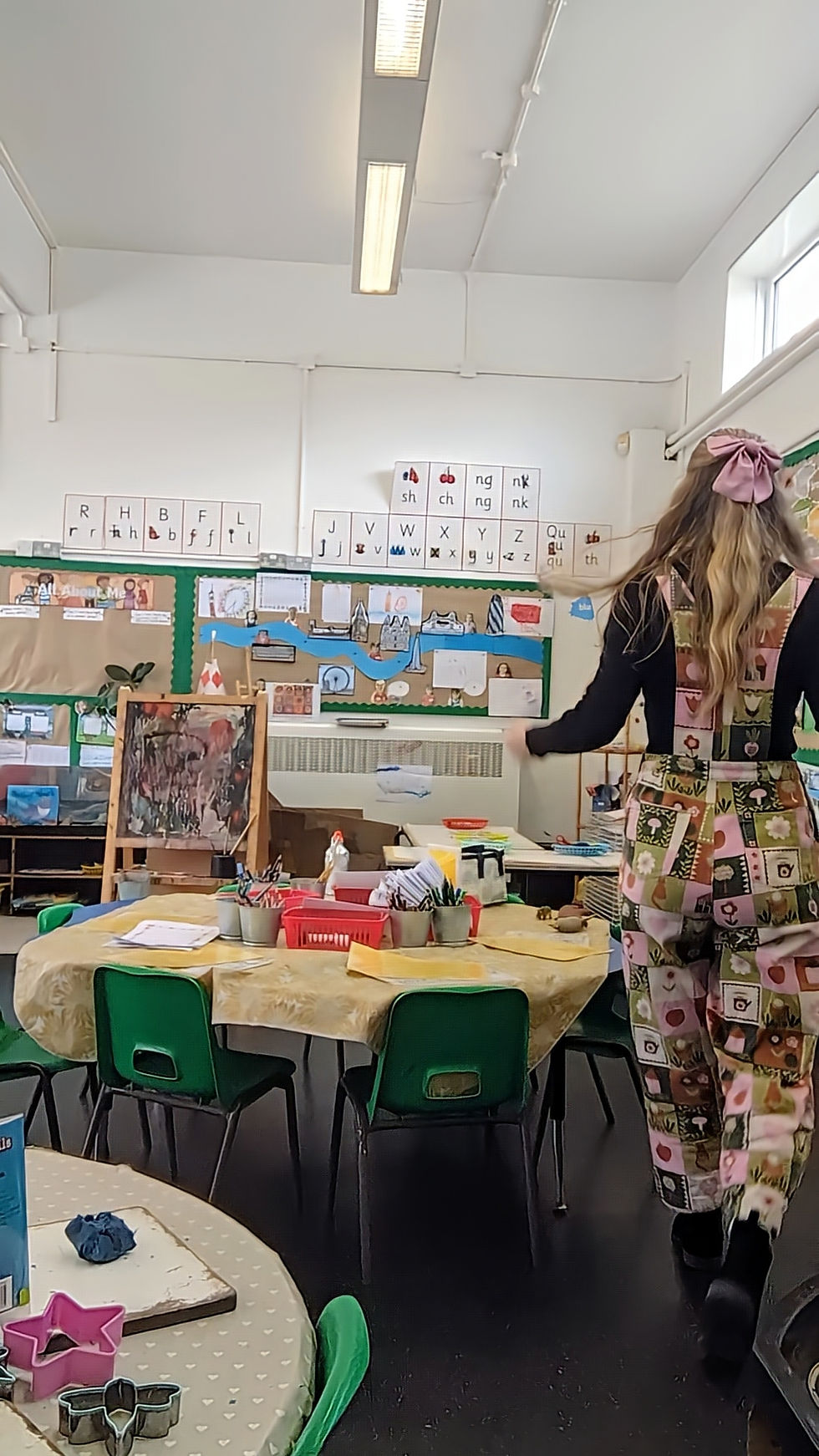Teaching Across Continents: Ten Surprising Differences Between Teaching in London and Country Australia
- Alice Dawson
- Jul 22, 2024
- 4 min read
Many people have asked me about the major differences I've experienced teaching in London compared to Australia. After six months in London, teaching at over 30 different schools from nursery to Year 6, I've gathered some unique insights. My perspective might differ from others, as I've been a supply teacher in London, whereas I worked full-time in one classroom back in Australia. Nonetheless, here are some significant differences I've observed:
Longer Lunch Breaks
Imagine this: a full hour to enjoy your lunch, read a book, or just chill. Yes, in the UK, teachers get a luxurious 60-minute lunch break. Compare that to Australia, where my lunch break was often a mere 20 minutes, squeezed between lunch duty and waiting for my turn at the microwave. Here in London, I have enough time to actually relax and recharge for the afternoon. This extended break not only helps in maintaining my energy levels but also allows for some much-needed personal time during the day.
No Lunch Duties
In the UK, teachers are free from lunch duty responsibilities. Every day, we get a full, uninterrupted hour to ourselves. This means I can genuinely enjoy my lunch without the added stress of supervising students. I think I will definitely struggle to adjust if I return to teaching in Australia and have to resume lunch duties! The freedom during lunchtime significantly contributes to a better work-life balance and reduces burnout.
Free Lunch for All Students
One of the most delightful surprises was discovering that all students in the UK receive a cooked lunch daily, designed by none other than chef Jamie Oliver. No matter their financial situation, every student gets a nutritious meal every day. Plus, schools provide fresh fruit daily for students to snack on during breaks. This initiative ensures that all children have access to healthy food, which is essential for their learning and development.
Lower Pay Rates
The pay rate for teachers in the UK is lower than in Australia. Combined with the high cost of living in London, teaching here is not ideal for saving money. Although the money is not great, it's enough to cover my rent and fund my European adventures. (And my daily four-pound coffees, of course). Despite the lower pay, the cultural experiences and travel opportunities have been worth the financial trade-off.
Teaching Assistants in Every Classroom
Every classroom I've been to has had a full-time teaching assistant (TA) in addition to the classroom teacher, regardless of the year level or type of school. This extra set of hands makes a world of difference, providing invaluable support and enhancing the learning environment. The presence of TAs allows for more individualised attention to students and helps in managing classroom dynamics more effectively, especially as a supply teacher.
Standardised Programs
Many London schools follow standardised programs, making my life as a supply teacher a breeze. I've become a pro at navigating these programs and their PowerPoint presentations, which simplifies the teaching process and keeps things consistent for the students. The standardisation ensures that there's a clear structure and uniformity in what is being taught, which is especially helpful when moving between different schools.
Fewer Specialist Teachers
In London, I've taught a wide variety of subjects, including Art, Design/Technology, Science, Physical Education, and even Languages. With fewer specialist teachers here in the UK, I've had the chance to diversify my teaching portfolio and embrace a wide range of subjects. I honestly feel like I have gained more teaching experience in the past six months than in two years back in Australia. This variety has made me a more versatile educator and has kept my teaching experience fresh and engaging.
Concrete Jungle Playgrounds
Forget sprawling grassy fields – many London schools have small playgrounds or even rooftop play areas due to lack of space. Year levels alternate lunchtimes to avoid overcrowding. It’s a stark contrast to the vast school grounds back in Australia, but it works in this urban setting. Despite the limited space, schools make creative use of their facilities to ensure that students still have ample opportunities for play and physical activity.
Club Central
London schools are buzzing with before and after school clubs. I arrive at 8am, and some students are already busy with morning clubs or having breakfast at school. After-school clubs range from chess and dance to sports and tuition, keeping students engaged and active beyond regular hours. These clubs provide students with opportunities to explore their interests and develop new skills in a supportive environment.
Longer Breaks for Students
Many schools have a 15-minute morning break and a one-hour lunch break. Some schools even allow students an additional 15-minute break in the afternoon before home time. These longer breaks seem to benefit the students, giving them additional time to relax and recharge. The extra downtime helps improve student focus and behaviour, making for a more productive learning environment.
These are just a few of the standout differences I've noticed between teaching in London vs country Australia. Every system has its quirks, but navigating these new experiences has been an absolute blast. From enjoying extended lunch breaks to diving into a variety of subjects, my time in London has definitely spiced up my teaching career. It's been a wild ride, and I've picked up so many new skills and perspectives along the way. Six months in and just 18 months left on my visa – time is flying by. I can totally see why so many Aussies decide to stick around and extend their visa beyond the two year mark. London has a way of capturing your heart and I have been no exception.
A x





Comments